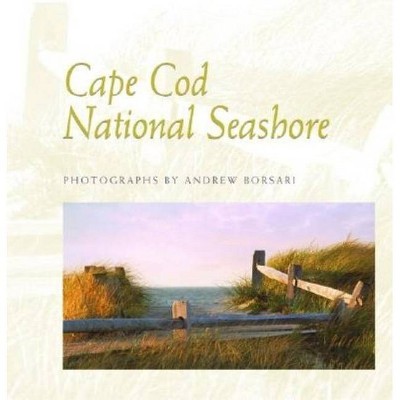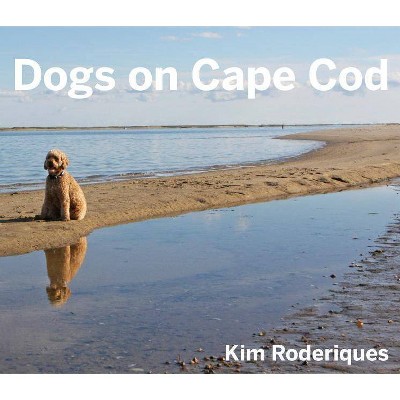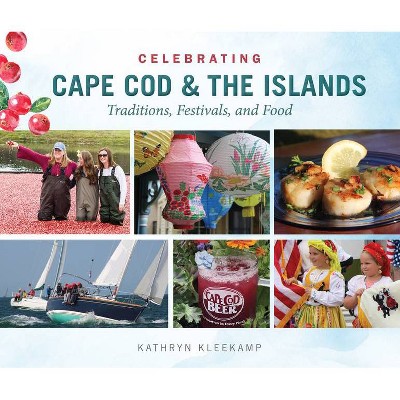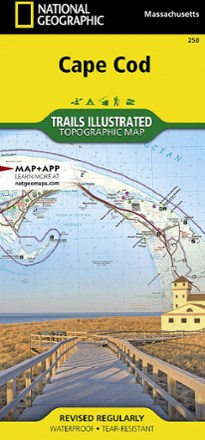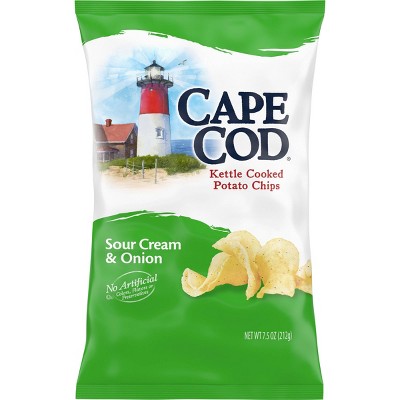Cape Cod Modern - (Hardcover)
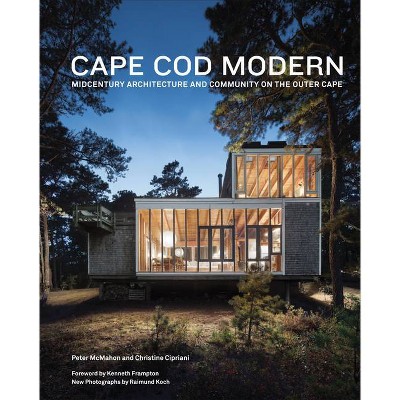
Similar Products
Products of same category from the store
AllProduct info
<p/><br></br><p><b> Book Synopsis </b></p></br></br><p><strong>From the "summer Bauhaus" on, the Cape's modern designers enjoyed a lifestyle based on communion with nature, solitary creativity and shared festivity</strong></p><p>In the summer of 1937, Walter Gropius, founder of the Bauhaus and a professor at Harvard's new Graduate School of Design, rented a house on Planting Island, near the base of Cape Cod. There, he and his wife, Ise, hosted a festive reunion of Bauhaus masters and students who had recently emigrated from Europe: Marcel Breuer, Herbert Bayer, László Moholy-Nagy, Xanti Schawinsky and others. Together they feasted, swam and planned their futures on a new continent, all sensing they were on the cusp of a momentous new phase in their lives. Yet even as they moved on, the group never lost its connection to the Cape Cod coast. Several members returned, when they had the means, to travel farther up the peninsula, rent cabins, buy land and design their ideal summer homes. Thus began a chapter in the history of modern architecture that has never been told--until now. The flow of talent onto the Outer Cape continued and, within a few years, the area was a hotbed of intellectual currents from New York, Boston, Cambridge and the country's top schools of architecture and design. Avant-garde homes began to appear in the woods and on the dunes; by the 1970s, there were about 100 modern houses of interest here. In this story, we meet, among others, the Boston Brahmins Jack Phillips and Nathaniel Saltonstall; the self-taught architect, carpenter and painter Jack Hall; the Finn Olav Hammarström, who had worked for Alvar Aalto; and the prolific Charlie Zehnder, who brought the lessons of both Frank Lloyd Wright and Brutalism to the Cape. Initially, these designers had no clients; they built for themselves and their families, or for friends sympathetic to their ideals. Their homes were laboratories, places to work through ideas without spending much money. The result of this ferment is a body of work unlike any other, a regional modernism fusing the building traditions of Cape Cod fishing towns with Bauhaus concepts and postwar experimentation.</p><p/><br></br><p><b> Review Quotes </b></p></br></br><br>In the summer of 1937, Walter Gropius, founder of the Bauhaus and a professor at Harvard's new Graduate School of Design, rented a house on Planting Island, near the base of Cape Cod. There, he and his wife, Ise, hosted a festive reunion of Bauhaus masters and students who had recently emigrated from Europe: Marcel Breuer, Herbert Bayer, László Moholy-Nagy, Xanti Schawinsky and others.-- "Designers & Books"<br><br>Mention Cape Cod and most people's thoughts immediately turn to lobster rolls, whale watching, crabby New Englanders, barnacle-festooned buoys, and chowder-lots and lots of chowder. But architecture aficionados know that the cape is also home to a substantial trove of houses designed by the great mandarins of 20th-century modern. That particular architectural heritage, in all its diversity and richness, is the subject of Cape Cod Modern: Midcentury Architecture and Community on the Outer Cape (Metropolis Books, $45), a new volume by Peter McMahon and Christine Cipriani that canvasses glorious resicences in beach towns stretching from Dennis to the gay-and-lesbian Riviera that is Provincetown. Marcel Breuer, Serge Chermayeff, Charles Gwathmey-there are plenty of boldface names that make an appearence in this intriguing and meticulously researched survey of modernism by the sea. (There are also plenty of accomplished yet lesser-known practitioners who made their mark among the dunes.)-- "Cape Cod Modern"<br><br>...evokes the most visceral, astonished response, even from veteran architects.--Peter McMahon "Take Magazine"<br><br>...the definitive account of this little-known chapter in American architecture.--Nick Miller "PIN-UP"<br><br>"Cape Cod Modern: Midcentury Architecture and Community on the Outer Cape" (Metropolis), coauthored by McMahon and Christine Cipriani, is a name-dropping beauty that covers not only the designers of the odd-shaped, rustic "summer camps in the air," as the co-authors call them, but their parties and intellectual ferment. There are Boston Brahmins such as Nathaniel Saltonstall and friends of Bauhaus founder Walter Gropius, including Marcel Breuer. These designers loved their porches and Breuer's -- suspended over a steep drop with views of three ponds -- was more spectacular than most.--Jane Gardner "The Boston Globe"<br><br>A beautifully written book with a tremendous sense of time and place.--John Pawson "John Pawson Architects LTD."<br><br>A perfectly considered piece of architectural publishing, Cape Cod Modern tells the story of when Modernism met the rugged American East Coast. Dotted along the shores of teh Outer Cape are a remarkable number of vacation houses and glorified beach huts, all designed with exquisite attention to detail by some of the biggest names in twentieth century architecture, including Marcel Breuer, Walter Gropius and Serge Chermayeff, as well as countless local stars. THe houses they built -photographed beautifully by Raimund Koch-are shown here alongside a history of the community that grew up around them, bolstered by the proximity to the key intellectual centres of post-war American life.--Jonathan Bell "Wallpaper*"<br><br>A succesful summer often means finding a hushed spot that's yours alone: a Spartan treehouse hidden in the woods, a ramshackle fishing shack up north, or - in the case of Cape Cod Modern- an avant-garde vacation home on the Outer Cape. These low, blunt cubes and rectangles of glass and wood, built from the 1930s to the 1970s, explode our notions of the Cape Cod pastoral. Here are some 200 archival images and 70 recent photos by Raimund Koch in a eye-opening history of an over looked moment in a modern architecture. Lobster pot end tables and rustic sea shanties need not apply.--Dana Jennings "The New York Times"<br><br>Cape Cod Modern: Midcentury Architecture and Comunity on the Outher Cape, by Peter McMahon and Christine Cipriani (Metropolis Books, $33), reveals one of the East Coast's best-kept architectural secrets; an enclave of disarmingly unpretencious houses, many inspired by chicken coops and oyster houses. Often made with scavenged wood mixed with raw lumber straight from the yard, the buildings were designed by Marcel Breuer, Eero Saarinen, Serge Chermayeff, Maurice Smith and serious amateurs. In this rich cultural setting, left-leaning figures including Mary McCarthy, Edmund Wilson..., bathed nude in brisk waters on principle and exercised elastic morals among the unpainted two-by-fours.--Joseph Giovannini "The New York Times"<br><br>Fascinating--an elegantly written, well researched, highly readable account of the creation and flowering of a world of social and intellectual exchange, its characters, influences, and traditions, and the refined, austere, and delightful houses that are its legacy.--George McNeely "World Monuments Fund"<br><br>For nearly four decades, Cape Cod was a haven where two different sets of designers--European modernists and local nonconformists--found common ground, working hard during the daytime, then repairing to each other's houses for cocktails and bonfires at night...Cape Cod Modern: Midcentury Architecture and Community on the Outer Cape, by McMahon and the architectural journalist Christine Cipriani, to be published by Metropolis Books in June. Full of fascinating primary research, archival photographs and lavish color pictures of the houses today--well-preserved and not--it opens a window onto a part of Cape life that has been secreted away in the woods for years, partly because that's what its creators intended.--Carol Kino "WSJ Magazine"<br><br>For those after some wider reading on Bauhaus, this photography book takes readers to Cape Cod, where Walter Gropius and his wife Ise hosted several of the movement's masters like Marcel Breuer, László Moholy-Nagy, and Bayer during the summer of 1937.--Natasha Levy "Dezeen"<br><br>In the 1930s, recent immigrant and Bauhaus founder Walter Gropius fell in love with the Cape's lonely, rolling dunes and wind-beaten fishermen's cottages. In the summer of 1937, he rented a house on Planting Island, just west of Cape Cod, and invited friends--including designer Marcel Breuer--to stay for a month of swimming and long dinners. This house party of European creatives in a remote New England outpost led to a little-known chapter in the history of American architecture: Over the years, many of Gropius's guests, some of them architects and designers, migrated to the Cape to build their own homes. Combining the traditional East Coast aesthetic with European modernism, they left behind a cluster of exceptional cottages hidden in the pine forests of the Cape Cod National Seashore.--Alice Newell-Hanson "Conde Nast Traveler"<br><br>In July Metropolis Books will publish Cape Cod Modern: Midcentury Architecture and Community on the Outer Cape, a vibrant cultural history that considers how time, place, and intersecting lives coalesced to generate the built environment. Co-authored by McMahon and Christine Cipriani, a Boston-based writer and Wellfleet summer resident, the pages of Cape Cod Modern brim with captivating images, original scholarship, unexpected legacies, and humorous anecdotes. Central to the trust's mission, the authors state in their introduction, "is the notion that buildings and landscapes bear cultural memories." In Cape Cod Modern, those cultural memories have been preserved with great dedication and joy.--Susan Morgan "Modern Magazine"<br><br>More than just a paean to an architectural style, Cape Cod Modern (Metropolis Books) illuminates a rich, under-examined moment- from 1938 to 1977- when the towns of the Outer Cape drew a hyper-creative crowd of design -besotted artists and intellectuals, in addition to the traditional vacationing psychoanalysts who head there each August. Walter Gropious, Marcel Breuer, and other members of their emigre Bauhaus tribe cavorted with bohemian Boston Brahmins, and just about everyone built themselves simple retreats that expressed the organic cross-pollination of vernacular building traditions, Yankee economy, and Bahuaus rigor... The book traces the flowering of a distinclty regional modernims marked not by flashy comissions but instead by deeply personal spaces meant for repose.--Peter Terzian "Elle Decor"<br><br>One of the missing links in East Coast modernism has been beautifully uncovered and brought to light by Peter McMahon and Christine Cipriani. Beyond a mere documentation of forgotten architecture, <i>Cape Cod Modern</i>is a first-rate chronicle of a special place and period in American cultural history.--Alastair Gordon "Co-Publisher, <i>Fire Island Modernist: HoraceGifford and the Architecture of Seduction</i>"<br><br>Rigorously researched and meticulously documented, <i>Cape Cod Modern</i> narrates an extraordinary era of architectural experiments in spatial organizations and materials on the Outer Cape. These houses are not only examples of an alternate legacy of the masters of modern architecture. They are diagrams of a very particular worldview and recommendations for a specific way of living -- progressive and enlightened, with art at its center.--Michael K. Hays "Graduate School of Design, Harvard University"<br><br>The most fun thing about Cape Cod Modern: Midcentury Modern Architecture and Community on the Outer Cape are the archival photographs. They capture the masters of the International Style- former Bauhaus director and then Harvard professor Walter Gropius, and emigre acolytes such as Marcel Breuer, Gyorgy Kepes, and Serge Chermayeff- relaxing on the decks of Modern houses in the woods around Truro and Wellfleet, Massachussetts, living what authors Peter McMahon and Christine Cipriani call a lifestyle based on communion with nature, solitary creativity, and shared festivity. That flavor is just one observation made in this much-needed study of a house style, besides the eponymous Cape Cod cottage, that is a significant part of the region's architectural legacy.--William Morgan "Design New England"<br><br>The significance of this remote seacost area in the evolution of Modernism dates back to the 1930s, when self-taught architecture buffs began creating modest houses, influenced by local tradition and cutting-edge work abroad. Later, the influx of inmigrants teaching at Hardvard and MIT brought such architects as Walter Gropious, Marcel Breuer, and Serge Chermayeff to the town of Wellfleet. Many built summer retreats here: humble rather than showy experiments in Modernism, some are scattered within the National Sea Shore. Several were lost through neglect, while the remaining few- by such locally known talents as Charles Zehneder, Olav Hammarstrom, and Paul Weidlinger- stood dilapidated, vacant, and slated for demolition. Then CCMHT convinced the Park Service to grant it long-term leases to restore them for artist-scholar residencies and other cultural or educational uses.--Amelar Sarah "Architectural Record"<br><br>Vacationers who frequent the Outer Cape may not recognize the (intentionally) hidden or, in several cases, derelict remains of a remarkable, little-known chapter in American architecture, revealed in CAPE COD MODERN: MIDCENTURY ARCHITECTURE AND COMMUNITY ON THE OUTER CAPE, by Peter MacMahon adn Christine Cipriani. One hopes the glamour shot of Hayden Walling's Halprin House given full-bleed reproduction on the cover-de rigeuer decor for the familiar sort of promotional architecture books that feature 'Architectural Digest'-style homes-will entice the unwary to buy this thoughtful examination of vacation homes built by modernist masters (both well-and undeservedly lesser-known) in Wellfleet and Truro between the late '30's and 1977. Most fancinating are the pocket bios of the black sheep Boston Brahmins and other talented amateurs, like Walling, who pioneered modern architecture on the Cape, and the Bauhaus refugees and other European emigres, including Serge Chermayeff and Marcel Breuer. who made the woods of Wellfleet a laboratory for modernism from the 40's through the 60's. A final chapter traces the efforts, more complex but less impressive, of the following generation.--Christopher Lyon "Bookforum"<br>
Price History
Price Archive shows prices from various stores, lets you see history and find the cheapest. There is no actual sale on the website. For all support, inquiry and suggestion messagescommunication@pricearchive.us
